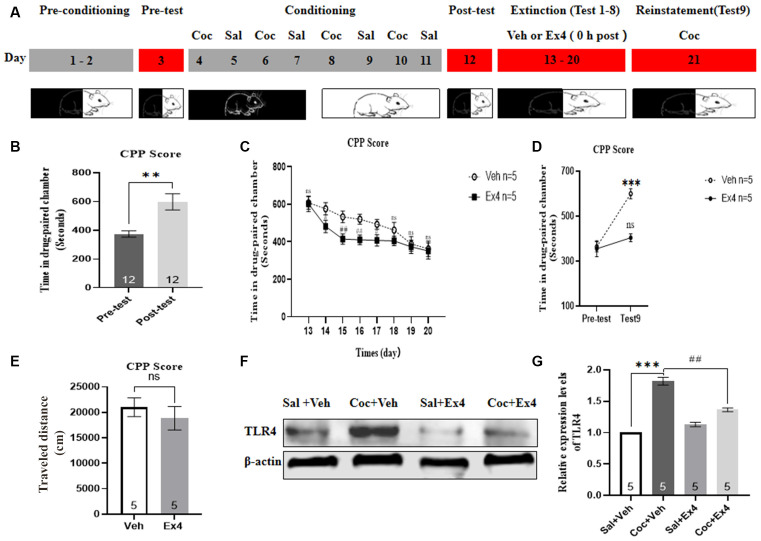Figure 7.
Ex4’s repeated treatment 0 h after each extinction enhances the non-confined extinction of cocaine-induced CPP and blocks cocaine-primed reinstatement of cocaine-induced CPP. (A) Timeline of behavioral testing and pharmacologic treatment protocals. (B) CPP scores of pre-test and post-test, indicated that most animals displayed a place preference for the cocaine-paired compartment following cocaine-induced CPP training. **represents p < 0.01 vs. pretestby Student’s t-test. (C) CPP scores of systemic administration of vehicle or Ex4 0 h after each extinction show that Ex4 promoted the early extinctioin in mice. N = 5 per group, # and ##represents p < 0.05 and p < 0.01 vs. vehicle group, respectively, ns represents no significance, two-way ANOVA. (D) CPP scores after treatment with vehicle or Ex4 indicate that Ex4 inhibited the reinstatement of cocaine-induced CPP. ***represents p < 0.001 vs. pretest, ns represents no significance, two-way AVOVA. (E) Distance traveled of vehicle and Ex4 on the cocaine-primed reinstatement test day. N = 5, ns represents no significance vs. vehicle group, Student’s t-test. (F) Representative image of TLR4 expression detected by Western blot analysis. (G) Semiquatitative analysis of the relative levels of TLR4 by densitometric analysis. ***represents p < 0.001 vs. Sal group, ##represents p < 0.01 vs. vehicle group by one-way ANOVA. Data are mean ± SEM. Coc, cocaine; Sal, saline; Ex4, exendin-4; Veh, vehicle.

